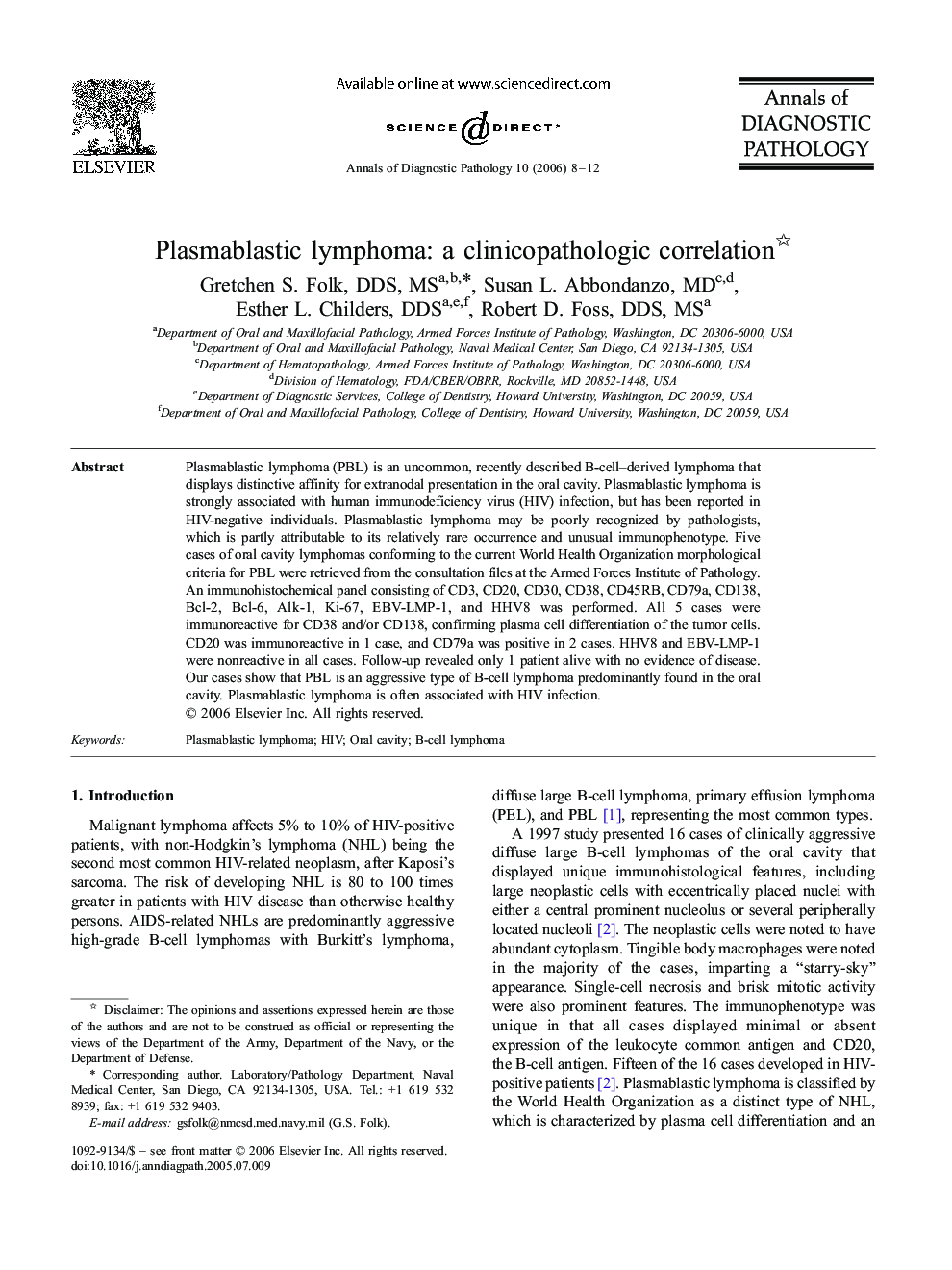| Article ID | Journal | Published Year | Pages | File Type |
|---|---|---|---|---|
| 4130777 | Annals of Diagnostic Pathology | 2006 | 5 Pages |
Plasmablastic lymphoma (PBL) is an uncommon, recently described B-cell–derived lymphoma that displays distinctive affinity for extranodal presentation in the oral cavity. Plasmablastic lymphoma is strongly associated with human immunodeficiency virus (HIV) infection, but has been reported in HIV-negative individuals. Plasmablastic lymphoma may be poorly recognized by pathologists, which is partly attributable to its relatively rare occurrence and unusual immunophenotype. Five cases of oral cavity lymphomas conforming to the current World Health Organization morphological criteria for PBL were retrieved from the consultation files at the Armed Forces Institute of Pathology. An immunohistochemical panel consisting of CD3, CD20, CD30, CD38, CD45RB, CD79a, CD138, Bcl-2, Bcl-6, Alk-1, Ki-67, EBV-LMP-1, and HHV8 was performed. All 5 cases were immunoreactive for CD38 and/or CD138, confirming plasma cell differentiation of the tumor cells. CD20 was immunoreactive in 1 case, and CD79a was positive in 2 cases. HHV8 and EBV-LMP-1 were nonreactive in all cases. Follow-up revealed only 1 patient alive with no evidence of disease. Our cases show that PBL is an aggressive type of B-cell lymphoma predominantly found in the oral cavity. Plasmablastic lymphoma is often associated with HIV infection.
